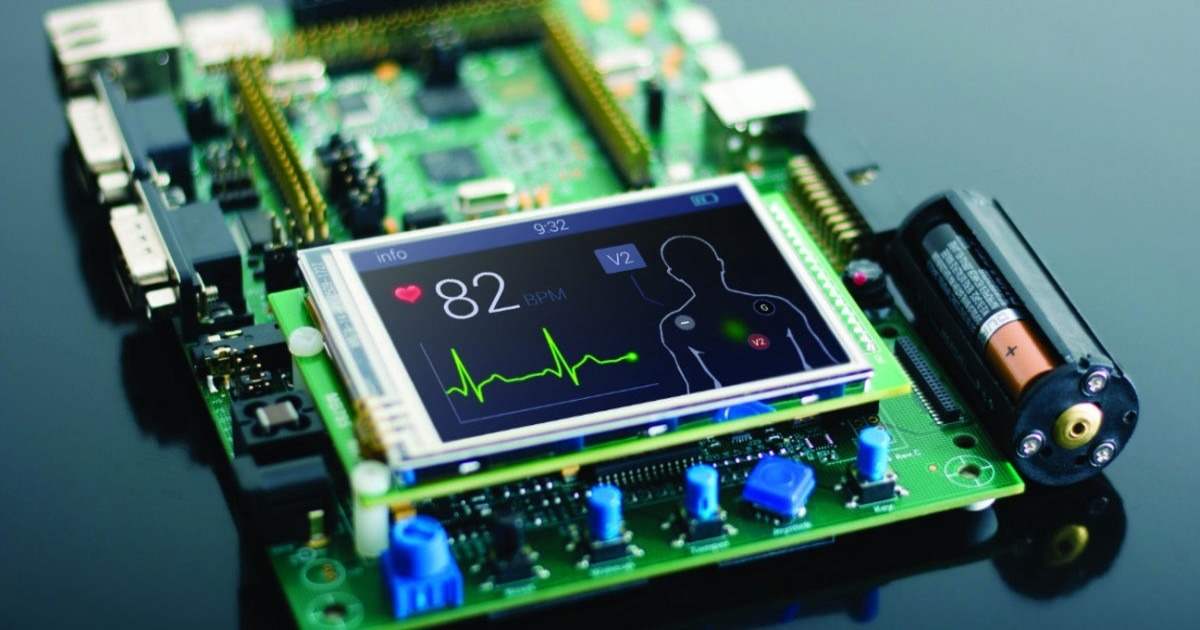What Are Embedded Systems?
Embedded Systems are computer systems that reside insides the device it controls. These are hardware and software combination, computer memory, I/O peripheral with real-time computing constraints, that are either fixed in capability or programmable, designed for a specific function towards to device they are attached to. They can range from having no user interface to having complex graphical(GUI) interface like mobile devices. Next, we will look into the Evolution of Embedded Systems.
How Embedded Systems Changed Over Time
Evolution of Embedded Systems
Year 1833- Michael Faraday described electronic conduction increasing with temperature in silver sulfide crystals.
Year 1874- Ferdinand Braun noted that current flowed freely only in one direction at the contact between the metal point and galena crystal.
Year 1961- Charles Stark Draper, in order to reduce the size and weight of the Appollo Guidance Computer, developed and Integrated Circuit(IC). It became the first computer to use Ic and it helped in collecting real-time flight data.
Year 1965- Autonetics developed the D-17B, missile guidance system in Minuteman 1. It marked the first mass production of the Embedded Systems.
Year 1968- The Volkswagen 1600 used a Microprocessor to control its electronic fuel injection system. It was the first Embedded System developed for a vehicle and marked an important contribution towards the Evolution of Embedded Systems.
Year 1970– Texas Instruments developed the first Microcontroller. Also, in 1971, Intel developed the first commercially available processor, the 4004. It was a 4-bit processor and was designed for use in calculators and small electronics.
year 1987- Wind River released the first embedded operating system, the real-time VxWorks. Also, in 1996, Microsoft’s Windows Embedded CE was released.
Late 1990s- Embedded Linux products began to become popular and today Linux is used in almost all embedded devices.
All these significant contributions towards the Evolution of Embedded Systems have contributed to modern-day gadgets and technologies all of which are dependant on embedded systems.
Embedded Systems In Present Time
As we can see Evolution of Embedded Systems took place at a rapid pace and significant contributions have been made by many scientists.
Today’s embedded systems can be divided into :
1) Real-Time Embedded System
2) Stand-alone Embedded System
3) Networked Embedded System
4) Mobile embedded System
5) Small-scale Embedded System
6) Medium-Scale Embedded System
7) Sophisticated or Complex Embedded system
Most of the embedded systems of the current time are based on microcomputer which is programmable, small computers with integrated memory all in one single integrated circuit(IC). The latest technology in Embedded Systems in the present time are:
1) Artificial intelligence and Machine Learning
2) Deep Learning
3) Embedded Security
4) Cloud Connectivity
5) Augmented Reality and Virtual Reality
Today’s focus is on Real-Time Embedded Systems
What is Real-Time Embedded System?
These are the latest and the most in-demand development in the Evolution of Embedded Systems. These are computer systems that monitor, control, and respond as per need to a change or and event in the external event. It has a low latency response to an input event. These systems work with strict time-constraints and can provide guaranteed worst-case response time to critical events and acceptable average-case response time to non-critical events
Real-Time Embedded Systems can be divided into 2 types:
1) Hard Real-Time Embedded System
2) Soft Real-Time Embedded System
Hard Real-Time Embedded System- The primary function of these types to systems is to ensure that all critical functions/processes are completed within the stipulated time frame and missing a deadline is considered a system failure. All delays in the systems are strictly time-bound. Data is stored in short-term or read-only memory as there is no secondary memory. These types of systems are used in various missiles and airplanes.
Soft Real-Time System- Even though the basic functionality is to ensure that critical processes have to completed within a given time frame, they are less constrictive than Hard-Time Systems. Soft Real-Time tries to reach a deadline but does not consider it a system failure if one or two deadlines are missed. They are a little bit more flexible than Hard Real-time Systems. They are used in various areas like multimedia, scientific projects, seismic sensors, etc.
Three Major Challenges with Real-Time Embedded Systems
1) Managing software engineering Organizations
2) Ensuring the development of a performance relevant architecture
3) Finding suitable tools
Applications Of Real-Time Embedded Systems
- Vehicle control system for automobiles, ships.
- Military operations
- Multimedia systems that provide graphics, video, and audio
- Space operations like spaceship launch, monitoring and space station control
- Medical treatments for radiation therapy, heart operations, etc.
Stand-Alone Embedded System- These are less complex and work on their own. They are independent of a system. Input is received by respective I/O pins and then the decision is made to perform output. They are mostly used in mp3 player, doorbell, calculator, etc
Networked Embedded Systems– These systems are connected with some kind of network. The system communicates with the server using the network. Application of these systems can be found in ATM machines, card swipe devices, etc. Our whole process of banking has changed and made it easier because of the new developments and Evolution of Embedded Systems.
Mobile Embedded Systems- These are the most preferred among embedded system and is a significant contribution towards the Evolution of Embedded Systems. Their main advantage is their wide range. Applications of these systems can be found in mobile phones, wireless cameras, etc.
Small Scale Embedded Systems- These are entry-level systems where 8-bit or 16-bit processors are used. The code for these systems is generally written in assembly language or in embedded C language. Application of these can be found in oven, CD drive, fax machine, printer, etc.
Medium-Scale Embedded System- These contain a 16-bit processor to a 32-bit processor. They are usually faster than small-scale systems. These are not preferred by many due to many complexities.
Sophisticated or Complex Embedded System- Speed is a measure concern here. They have both hardware and software complexity. These can be found in the network router, IP camera, etc and marks the Evolution of Embedded Systems
Conclusion
So, we can see from the above article that the Evolution of Embedded Systems has taken place drastically along the way. In today’s world, we cannot think of a device that does not have Embedded Systems. No electronic product in the market is with an Embedded System. Every industry needs Artificial intelligence which is the future and this can be provided by implementing Embedded Systems. Thus, we can say there is definitely a long way to go in the research and development of new technology embedded system, inculcating deep learning, etc and thus, anyone in the field of embedded system is sure to have a bright and exciting future and might further contribute towards the future Evolution of Embedded Systems

All you need to know about Robotics and Embedded System
Learn Robotics & Embedded Systems
Learn Robotics & Embedded System with WAC
Other Skills in Demand
| Artificial Intelligence | Data Science |
| Digital Marketing | Business Analytics |
| Big Data | Internet of Things |
| Python Programming | Robotics & Embedded System |
| Android App Development | Machine Learning |

